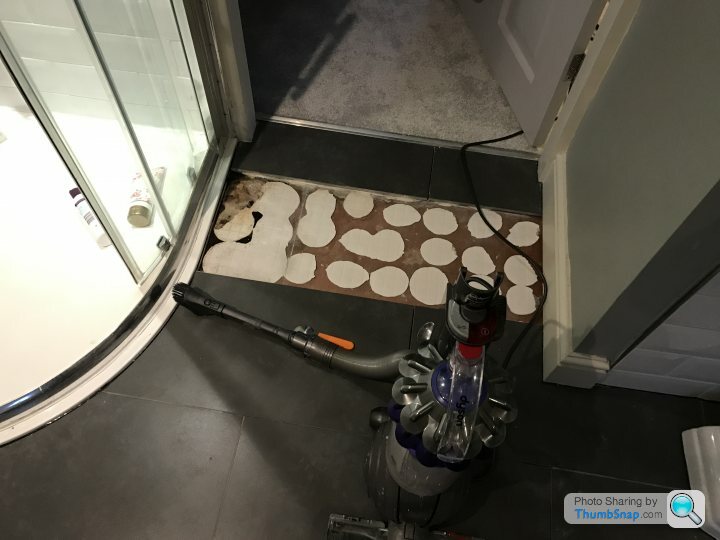Tiling question - loose tiles
Discussion
I'm just in the process of trying to sort out our bathroom floor. It was tiled five years ago by a professional tiler who obviously deemed dot and dabbing to be acceptable. Needless to say, half the tiles in the kitchen and bathroom are loose and I'm intending to repair them.
I've ground out the grout and removed a couple of tiles and was expecting the adhesive to be still stuck to the tiles and no longer to the floor. However, its the other way around and the adhesive is still stuck to the floor, so much so that even with a chisel it's proving difficult to remove.
So, what has failed here? Has he used the wrong adhesive for porcelain tiles? Was the bond just weaker to the tile and that's what gave way first? There's some movement in the sub-floor which at this point in time I can't really address without blindly driving screws through the ply into the joists. Any advice other than to rip up and start again?
I'm considering pulling the whole lot up and putting Karndean down!

I've ground out the grout and removed a couple of tiles and was expecting the adhesive to be still stuck to the tiles and no longer to the floor. However, its the other way around and the adhesive is still stuck to the floor, so much so that even with a chisel it's proving difficult to remove.
So, what has failed here? Has he used the wrong adhesive for porcelain tiles? Was the bond just weaker to the tile and that's what gave way first? There's some movement in the sub-floor which at this point in time I can't really address without blindly driving screws through the ply into the joists. Any advice other than to rip up and start again?
I'm considering pulling the whole lot up and putting Karndean down!

Thanks for the replies. The floor is chipboard > 9mm plywood > tiles and the ply is screwed every four inches. The shower leak should have been addressed with new silicone but I'm hoping it's not the pipe work inside the wall, although there are no marks on the ceiling below.
I think the simplest option for now would be to take up the loose tiles, remove the old adhesive and lay them on a full bed of proper porcelain adhesive. Otherwise it's major work to take the whole floor up. Karndean type flooring may be an option if it's able to withstand a bit more flex in the floor.
It's annoying because I've laid a few full floors myself elsewhere and not a single tile has come loose.
I think the simplest option for now would be to take up the loose tiles, remove the old adhesive and lay them on a full bed of proper porcelain adhesive. Otherwise it's major work to take the whole floor up. Karndean type flooring may be an option if it's able to withstand a bit more flex in the floor.
It's annoying because I've laid a few full floors myself elsewhere and not a single tile has come loose.
B17NNS said:
Don't use ply. Use 'no more ply'. Only a small uplift in floor height and a perfect surface to tile to.
Don't use dabs as he has. Use a 8 or 10mm notched trowel. Also back butter (thin smear) the back of the tile. Use a good quality powdered flexible adhesive and grout.
It's an entire floor up job OP, I'm afraid. The rest of the floor will be just as dodgy i'm guessing and it will only end up coming apart again in the future. Good sharp chisel and hammer to remove the stuff on the floor. Then (as has been said), overboard with no more ply, screw in every 150mm then use a notched trowel. Back buttering is only really required on large tiles.Don't use dabs as he has. Use a 8 or 10mm notched trowel. Also back butter (thin smear) the back of the tile. Use a good quality powdered flexible adhesive and grout.
Then use a good S1 or even S2 flexible adhesive - Mapei etc or similar. Don't go for the pre-mixed stuff.
Gassing Station | Homes, Gardens and DIY | Top of Page | What's New | My Stuff




 d fitter has used one tub where it needed 3. Even then it doesn't look like the adhesive grabbed the tile.
d fitter has used one tub where it needed 3. Even then it doesn't look like the adhesive grabbed the tile.